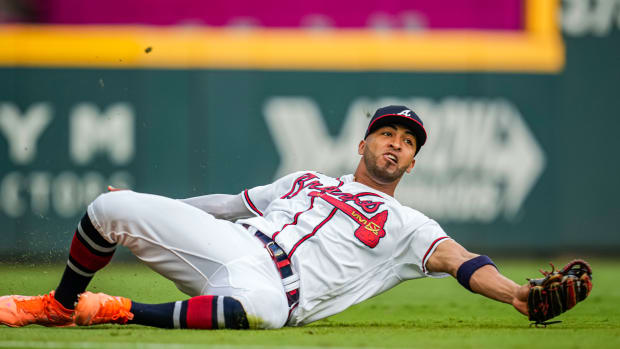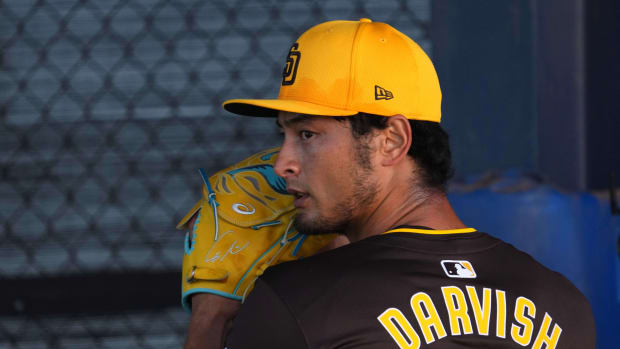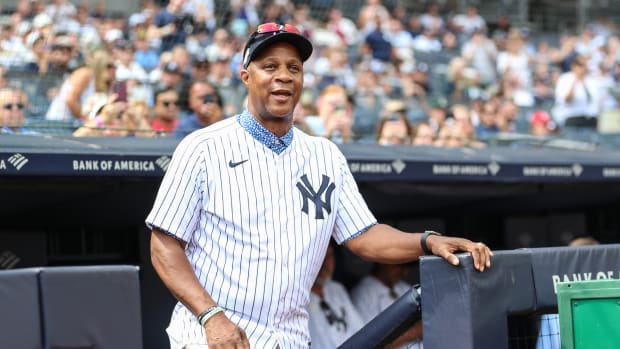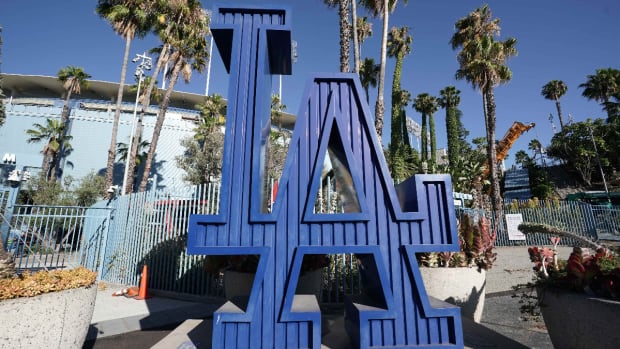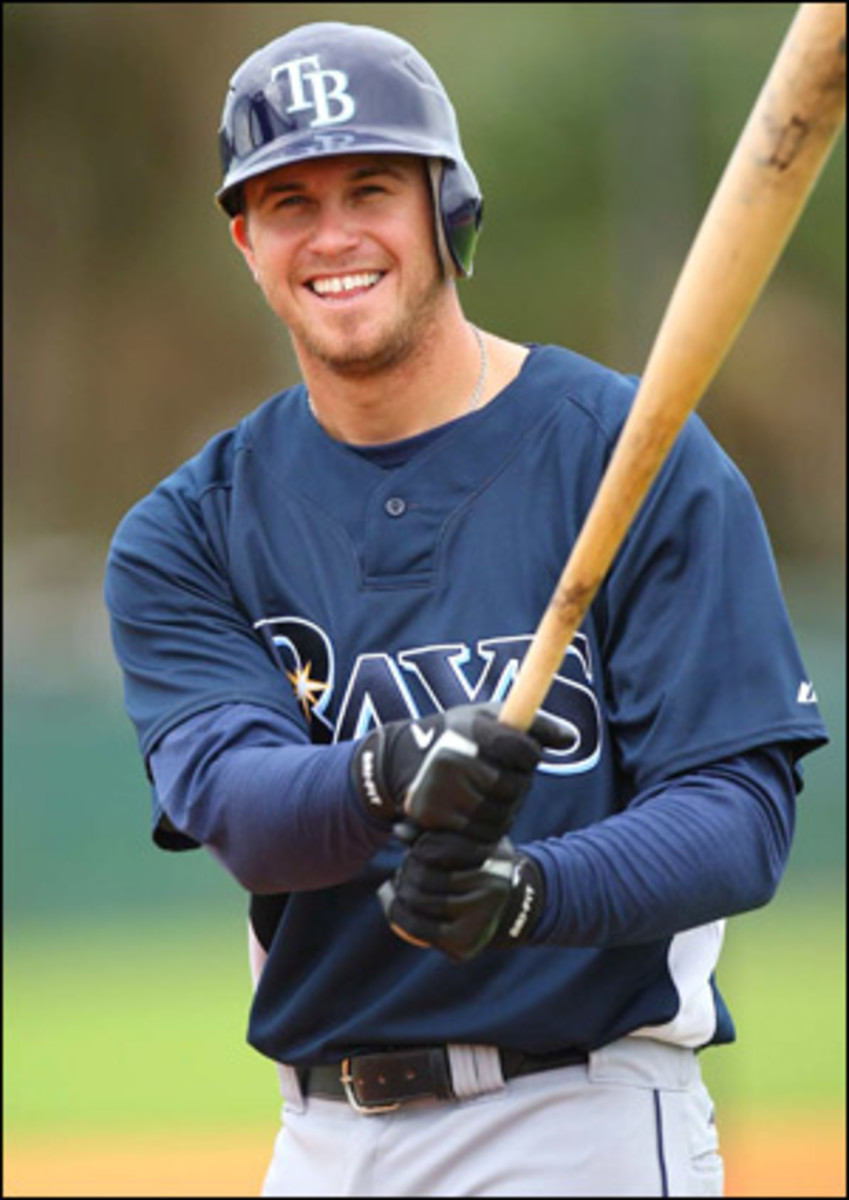
The (Next) Next Big Thing
No, he is not even distantly related to her. No, his girlfriend's name is not Toni -- it's Savannah, and they've been dating, off and on, for seven years. No, he can't recall ever being involved in anything more scandalous than the time in high school he was required to pick up trash for four hours on a Saturday as punishment for shooting spitballs in class.
Evan Longoria's laid-back SoCal mien won't allow him to get too worked up about the uninspired gibes that come from having a name so similar to a certain actress's -- the chants of "EEEE-va! EEEE-va!"; the playing of the Desperate Housewives theme song when he steps to the plate in opposing ballparks. He's nowhere near as disgruntled as, say, Michael Bolton, the character in the 1999 cult comedy classic Office Space who angrily declared, "There was nothing wrong with it until I was about 12 years old and that no-talent ass clown became famous and started winning Grammys."
All that Longoria will allow is that "it's kind of a funny coincidence, but it does get pretty old." Carl Crawford, Longoria's Tampa Bay Rays teammate, believes Longoria won't have to worry about the cracks much longer. "He's going to make Evan Longoria the manliest name you can possibly think of," says Crawford, "once he shows what he can do on the baseball field."
While his negligee-favoring doppelgänger continues to dominate the Maxim Hot 100 list, Evan Longoria, 22, has soared up some lists of his own since he was drafted third overall out of Long Beach State by the Rays in June 2006. The 6' 2", 210-pound third baseman is generally considered to be among baseball's three best prospects. (He tops Scouts Inc.'s list, and both Baseball Prospectus and Baseball America rank him in the top three.) His skills are so obvious that teammates and opponents alike keep coming back to one phrase in particular to describe him.
"He's the real deal," says a player development executive for a National League club. "We had him ranked as the best college bat in the nation the year he came up -- great bat speed, balance -- and he's proved that out."
"He's got light-tower power," says Gary Gaetti, the former big league slugger who was Longoria's hitting coach last season at Triple A Durham. "But he's a good hitter too, and he uses the whole field. He's one of the better players I've ever seen coming through the minor leagues. He's the real deal."
"He looks as smooth at third base as anybody I've seen out there," says Rays centerfielder B.J. Upton. "My brother [Justin Upton, the first overall pick in 2005] played against him in Double A, and he called me and said, 'Dude, this guy Longoria you've got -- he's the real deal.' "
In the 171 games in which he played in 2007 (Double A, Triple A, the Arizona Fall League and with Team USA in November's World Cup) he had 33 homers, 115 RBIs and 42 doubles, while maintaining an on-base percentage above .400. And all signs indicate that his ascent will continue in Tampa Bay sooner rather than later. While the Rays say that they want to see how Longoria performs during spring training before naming him the Opening Day starter, they have already shifted last year's third baseman, Akinori Iwamura, to second. "For having played only a year-plus of pro baseball, he's extremely advanced," says Rays general manager Andrew Friedman. "But what's most important here is what's best in terms of his development, and whether that's at Triple A or on the big league level, or a combination of the two, remains to be seen."
There are, of course, other factors at play in the Rays' decision-making process. They ranked last in team payroll ($24.1 million) last season, and even though they've committed to ramping up the budget since Wall Street financier Stuart Sternberg acquired the team in 2005, they're not free spenders. The Rays might want to delay the start of Longoria's big league service clock -- and, consequently, his eventual eligibility for free agency.
The team also knows too well that "real deal" prospects are not the same thing as big league stars. It was only a year ago that SPORTS ILLUSTRATED printed a mock 2010 Baseball Preview cover that read BELIEVE IT! THE DEVIL RAYS ARE THE BEST TEAM IN BASEBALL, and pictured the smiling faces of outfielders Delmon Young and Elijah Dukes. The prodigiously talented but temperamental Young, who was the first pick in the 2003 draft, was dealt in late November to the Minnesota Twins, and the prodigiously talented but troubled Dukes is now with the Washington Nationals after a series of well-publicized incidents of domestic violence prompted the Rays to trade him in December.
With that housecleaning complete, Rays players and management are confident that the sentiment expressed on that SI cover remains valid. "When we came in [two years ago], we inherited a lot of stuff that had been going on in the past," says manager Joe Maddon. "Delmon was in there before that; Elijah was in there before that. It was up to us to evaluate what we saw and create the Ray way of doing things. Evan Longoria is part of that reinvention. In essence he will be the poster child of that new beginning."
Five years ago, when Longoria was a senior at St. John Bosco High in Bellflower, Calif., it seemed unlikely that he'd turn out to be the poster child for anything. He was 5' 10", 160 pounds and was overshadowed by his teammate Derrick Williams, a three-sport star who went on to play three unexceptional seasons as a tailback-kick returner at UCLA. Longoria was not recruited by a single Division I school and ended up going to nearby Rio Hondo Community College mostly because, he says, "I just wanted to go somewhere where I wouldn't sit on the bench."
Then -- and Longoria's not quite sure why -- "something clicked," he says. "I learned how to hit." He batted .430 in his one year at Rio Hondo. After transferring to Long Beach State in 2004, he batted .320 as a sophomore and became a Golden Spikes Award finalist a year later when he hit .353. In the summer of 2005 he won the MVP award in the prestigious Cape Cod League, beating out five of the first six picks in the following summer's draft as he led all players in home runs (eight), RBIs (35), slugging (.500) and extra-base hits (16).
When it came time for the Rays to assemble their '06 draft board, their top choice was clear-cut, even though they were starved for arms. Friedman says their next three options were all pitchers -- Brad Lincoln (who went fourth to the Pittsburgh Pirates), Andrew Miller (sixth, to the Detroit Tigers) and Tim Lincecum (10th, to the San Francisco Giants) -- but Longoria was too good to pass up.
Twenty minutes after he was drafted, Longoria signed a deal that included a $3 million signing bonus. "I didn't want to be one of those guys who sat at home and waited to negotiate for more money," he says. "I had already had three weeks off from baseball, and I was ready to get up and go."
Longoria moved through the Rays' system so quickly in 2006 that it soon became difficult even to arrange a meal with him. "He was playing with Visalia in the [high Class A] California League," says Mike Salazar, Longoria's coach at Rio Hondo, "and I'd planned to take him to lunch on my way home from a vacation [in August]. We're headed down the road, and I called him and said, 'I'm almost there.' He said, 'Man, don't bother. They just promoted me to [Double A] Montgomery, and I'm already in Alabama.' "
Longoria reached Triple A Durham just 14 months after he was drafted, and it was there that he produced his signature minor league moment when he crushed a 1-and-2 pitch onto the street behind the leftfield wall against the Toledo Mud Hens. The blow was estimated to have gone 440 feet. "That was an absolute bomb," recalls Gaetti, his eyes widening. "I'm talking a jungle mash. High and deep -- just gone." In his locker Gaetti keeps a copy of the next day's Durham Herald-Sun sports section, which features the Bulls' bench in a front-page photo that was snapped just after Longoria made contact. Many of the players have their hands on their heads in amazement; some look almost terrified by the violence they've just witnessed their teammate inflict on the baseball.
If there's one aspect of Longoria's game that might prevent him from trotting out to third base when the Rays open the season at Baltimore's Camden Yards on March 31, it's his plate discipline. "Last year my whole focus was on pitch selection and cutting down my strikeout ratio, and I didn't do as good a job as I wanted to," he says. He struck out 110 times in 136 regular-season games at Double and Triple A.
For Maddon, though, Longoria's adjustment to big league pitching is merely a matter of when, not if. "He's going to hit for a high average; he's going to hit for power; he's going to drive in runs. There's no question."
When Longoria debuts, he could be followed by plenty of reinforcements. The Rays' organization features four other prospects who rank in Baseball Prospectus's top 25: pitchers David Price (No. 6) and Wade Davis (No. 15), outfielder Desmond Jennings (No. 18) and shortstop Reid Brignac (No. 25). Just one other organization -- the Cincinnati Reds -- has as many as three. "We talk about the opportunities we have here every day," says Brignac, who roomed with Longoria in Montgomery last season. "We love playing together."
With a Longoria-led group of committed, baggage-free youngsters itching to join a solid core of emerging stars that includes Crawford, Upton, first baseman Carlos Peña and ace Scott Kazmir, the Rays appear poised to reverse the fortunes of a franchise that has never won more than 70 games. You might even say that the Rays' future -- for real, this time -- looks anything but desperate.































